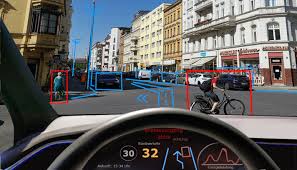
The global push toward digital transformation is reshaping every aspect of the automotive industry. At the forefront of this evolution stands the software-defined vehicle (SDV) — a concept that, while not entirely new, has rapidly accelerated in recent years. SDVs are redefining how cars are engineered, produced, and experienced by consumers.
More Than a Buzzword: What Makes a Vehicle “Software-Defined”?
Think of a software-defined vehicle as a smartphone on wheels — constantly connected, update-ready, and packed with dynamic features and applications.
In an SDV, most vehicle functionalities are driven primarily by software rather than fixed hardware. The move from traditional automotive design to SDVs requires separating software from hardware and adopting a layered, zonal architecture. This evolution results in safer, smarter, and more connected vehicles that can evolve over time through over-the-air (OTA) updates. Drivers benefit from continuous improvements, real-time data integration, and a personalized driving experience that feels more digital than mechanical.
From Mechanical Engineering to Software Innovation
Historically, vehicles were hardware-dominated machines where innovation relied heavily on mechanical engineering. Software served a limited role, confined to specific Electronic Control Units (ECUs) with minimal flexibility.
The rise of SDVs has flipped that model. Today, most vehicle systems — from infotainment to driving dynamics — are controlled, enhanced, and updated via software. This shift is powered by modular and zonal architectures that separate software functions from physical hardware, creating flexibility and scalability.
Defining Characteristics of a Software-Defined Vehicle
A modern SDV typically includes:
More Than a Buzzword: What Makes a Vehicle “Software-Defined”?
Think of a software-defined vehicle as a smartphone on wheels — constantly connected, update-ready, and packed with dynamic features and applications.
In an SDV, most vehicle functionalities are driven primarily by software rather than fixed hardware. The move from traditional automotive design to SDVs requires separating software from hardware and adopting a layered, zonal architecture. This evolution results in safer, smarter, and more connected vehicles that can evolve over time through over-the-air (OTA) updates. Drivers benefit from continuous improvements, real-time data integration, and a personalized driving experience that feels more digital than mechanical.
From Mechanical Engineering to Software Innovation
Historically, vehicles were hardware-dominated machines where innovation relied heavily on mechanical engineering. Software served a limited role, confined to specific Electronic Control Units (ECUs) with minimal flexibility.
The rise of SDVs has flipped that model. Today, most vehicle systems — from infotainment to driving dynamics — are controlled, enhanced, and updated via software. This shift is powered by modular and zonal architectures that separate software functions from physical hardware, creating flexibility and scalability.
Defining Characteristics of a Software-Defined Vehicle
A modern SDV typically includes:
- Zonal architecture with centralized computing: One or two high-performance computers (HPCs) replace numerous traditional ECUs, while zonal gateways connect multiple physical and virtual ECUs at the vehicle’s edges.
- Modular software stacks: Scalable platforms enable faster innovation and easier addition of new features over time.
- Advanced connectivity: Integration of 4G, 5G, Wi-Fi 7, UWB, and future-ready 6G and NTN capabilities ensures always-on, high-speed communication.
- OTA updates: Seamless software upgrades deliver new functions, enhance security, and continuously improve user experience.
- Cloud integration: Real-time data exchange and analytics power connected services and insights.
- AI-driven functionality: Artificial intelligence transforms vehicles into intelligent, adaptive digital environments.
This paradigm shift does more than enhance technology — it redefines business models and customer engagement. Automakers can now extend vehicle lifecycles, generate recurring revenue, and build long-term relationships with drivers through connected services and continuous updates.
The Competitive Landscape
Software-defined vehicles are no longer just a vision of the future — they’re already shaping the present. Major automakers (OEMs) are investing in next-generation architectures, cloud ecosystems, and embedded AI computing, while new entrants are challenging traditional players with innovative approaches.
The competition to define the future of mobility is in full swing. The SDV marks not just a technological milestone but a complete reimagining of how we perceive vehicles, innovation, and customer value. For those prepared to lead, the opportunities are immense.
Stay tuned for the next part of our SDV Blog Series, where we’ll explore the architectural evolution from domain-based to zonal and service-oriented architectures, and how these developments are shaping the future of the automotive landscape.
The Competitive Landscape
Software-defined vehicles are no longer just a vision of the future — they’re already shaping the present. Major automakers (OEMs) are investing in next-generation architectures, cloud ecosystems, and embedded AI computing, while new entrants are challenging traditional players with innovative approaches.
The competition to define the future of mobility is in full swing. The SDV marks not just a technological milestone but a complete reimagining of how we perceive vehicles, innovation, and customer value. For those prepared to lead, the opportunities are immense.
Stay tuned for the next part of our SDV Blog Series, where we’ll explore the architectural evolution from domain-based to zonal and service-oriented architectures, and how these developments are shaping the future of the automotive landscape.


 Software-Defined Vehicles: The Future of Connected and Smart Cars
Software-Defined Vehicles: The Future of Connected and Smart Cars




 Companies
Companies